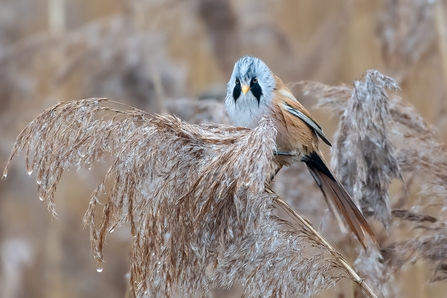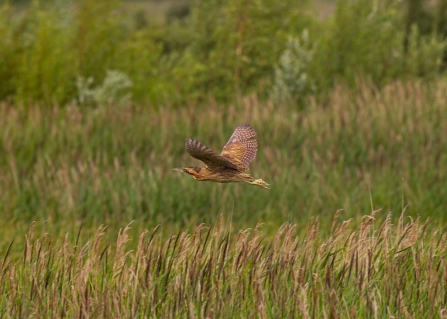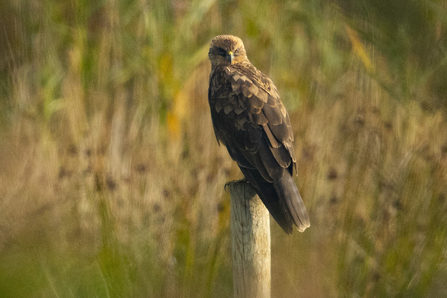Recently I was sitting in one of the hides at Potteric Carr when I heard a clear and relatively loud “pinging” noise, like the sound of a bicycle bell, coming from the near by reeds. This evocative sound gave away the presence of a bearded tit, a recent colonist at Pottreric Carr nature reserve.
This species’ successful breeding completed the “big three” we have been hoping would make Potteric Carr their home since the creation of Huxterwell Marsh back in 2006. Both marsh harrier and bittern have bred successfully every year since 2014, with between one and two pairs of each breeding at the reserve.
Bearded tits have proven to be trickier to attract all year round. Up until 2019, we had only recorded the occasional bird in spring and autumn. By closely observing the behaviour of all three species, we have been able to confirm that in 2020 they have all successfully bred at Potteric Carr for a second consecutive year.
This is great news as it demonstrates that the reedbeds across Huxterwell have matured sufficiently to attract a full range of bird species. It also establishes Potteric Carr within the wider landscape, and as part of a network of nature reserves and protected areas across the Humberhead Levels and Dearne Valley that support these species and the ecosystem in which they can thrive. Hopefully in the future, the small colony of bearded tits will grow further, both at Potteric Carr and beyond.
Potteric Carr is an important nature reserve nationally for both the bittern and the marsh harrier, as both species start to recover from historic low numbers across the country. The breeding success of these birds at our Doncaster reserve demonstrates how we can, through concerted effort to provide suitable space and habitats, encourage the recovery of iconic, though still vulnerable, species.



